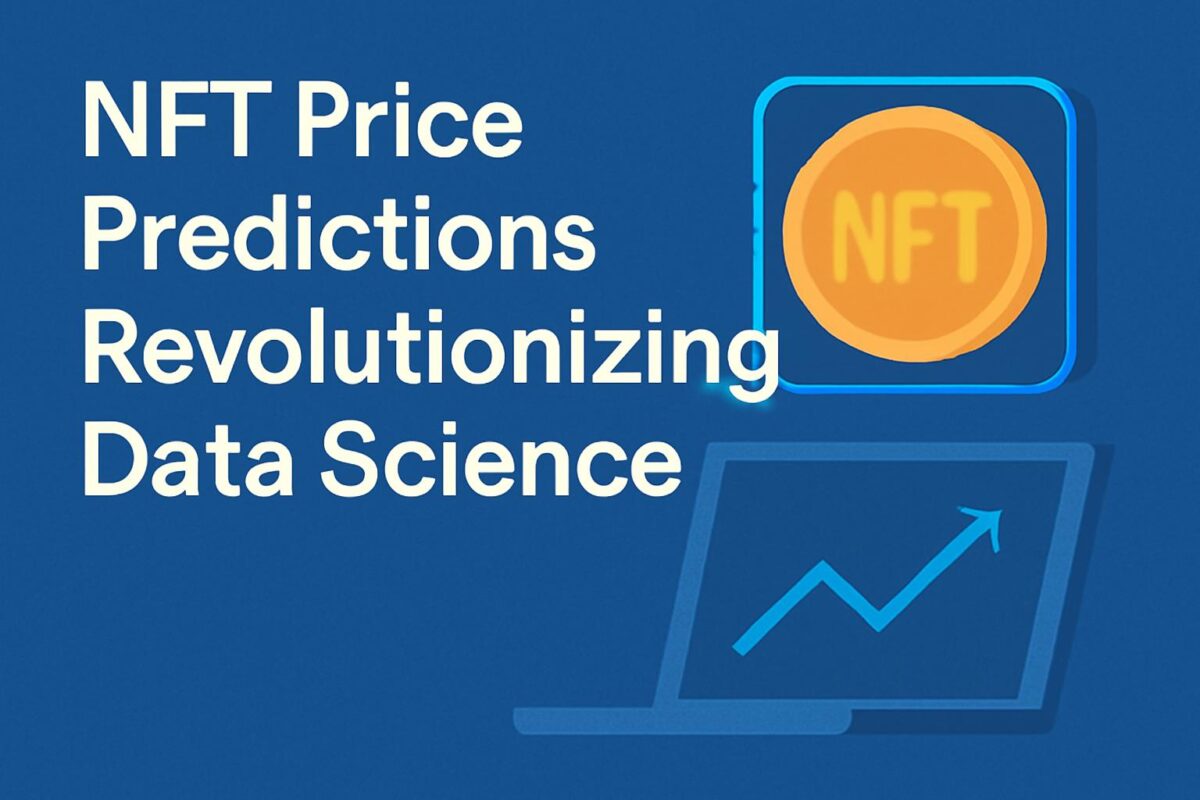NFT Price Predictions Revolutionizing Data Science

Non-fungible tokens (NFTs) have captured global attention, but with volatility and hype driving prices, accurately predicting their value remains a challenge. Enter data science: a transformative force bringing precision, transparency, and strategy to NFT trading. In this blog, we delve into how cutting-edge data science in NFTs is reshaping how collectors, investors, and platforms forecast price movement using NFT Price Predictions and related algorithms, predictive analytics, and AI-powered tools.
The Volatility of NFT Price Predictions
NFTs, by nature, lack intrinsic value, making them susceptible to speculation, trends, and influencer hype. While some collections skyrocket, others fade into obscurity. Traditional valuation models fall short, making NFT price prediction more art than science, until recently.
Data Science: The Game-Changer in NFT Price Predictions and their Valuation
1. Predictive Analytics for NFTs
Predictive models analyze historical price trends, wallet activity, social media sentiment, and marketplace behavior. These models forecast future prices using:
- Regression analysis
- Time-series forecasting
- Classification models (e.g., random forests, XGBoost)
Example:
An NFT marketplace can analyze price swings across similar collections and predict when a dip or surge is likely to occur.
2. Machine Learning for NFT Price Predictions
Machine learning algorithms continuously learn from real-time blockchain data, adapting valuation strategies dynamically. Algorithms ingest:
- Metadata (artist, rarity, attributes)
- Sales history
- Social and transactional data
NFT Valuation Algorithms: How They Work
A typical NFT valuation algorithm uses a blend of:
- Feature extraction from smart contracts and metadata
- Sentiment scores from social feeds
- Transaction clustering to detect market momentum
These elements are modeled using supervised learning methods, often producing remarkably accurate valuation windows.
ALSO READ: The Ultimate Guide to Snagging Undervalued Digital Collectibles
Blockchain Data Modeling for NFT Price Predictions
Data scientists mine vast amounts of blockchain data to model:
- Holder behavior and transaction patterns
- Rarity indices
- Community engagement trends
This empowers platforms to develop NFT analytics software that can:
- Score an NFT’s long-term value
- Predict market dips
- Suggest optimized buy/sell windows
AI-Driven NFT Market Trends
Real-Time AI Tools
AI can now track thousands of NFT assets and collections in real time, generating trend predictions like:
- Upcoming blue-chip NFTs
- Community-driven hype
- Whales’ wallet movements
Use Case:
Platforms like DappRadar and Nansen deploy these tools to provide NFT trading strategies for users based on deep AI analysis.
Emerging NFT Investment Tools Powered by Data Science
Tools now emerging in the NFT ecosystem include:
- Risk scoring dashboards
- Predictive resale value indicators
- Volatility alerts
- AI portfolio optimization for NFTs
These NFT investment tools integrate predictive analytics and blockchain modeling for informed decision-making.
Internal & External Links
Internal Links:
- The Role of AI in Crypto Trading Platforms
- Understanding Blockchain Architecture for Beginners
External Links:
- Nansen NFT Analytics
- OpenSea Developer Docs
FAQs
Q1: How accurate are NFT price prediction models?
A1: While no model guarantees 100% accuracy, data science models can improve predictions significantly using historical trends and machine learning.
Q2: Can AI predict which NFTs will go viral?
A2: AI tools can forecast rising interest based on social and transactional patterns, but virality involves unpredictable human behavior.
Q3: What data is used in NFT valuation algorithms?
A3: Algorithms use metadata, past sales, owner history, rarity, and blockchain transaction logs.
Q4: Are there platforms using these data science models already?
A4: Yes. Tools like Nansen, Dune Analytics, and Upshot leverage predictive models for NFT analysis.
Call to Action (CTA)
🚀 Want to stay ahead in the NFT market with precision-driven insights? Subscribe to our newsletter and get weekly AI-powered NFT predictions and tools delivered straight to your inbox.